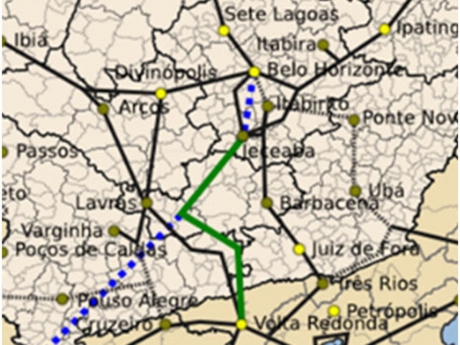“Milagre Econômico” (“Economic miracle”) era, during the military rule. The railway construction was announced by Brazilian government in 1973 and it was no more than the realization of an old project of a specialized line for iron ore transport The steel railway, also known as The 1.000-days railway, is a Brazilian railway designed in that Rede Mineira de Viação had already recommended in 1956. It has more than one hundred tunnels in its path, between those, Tunelão, the biggest railway tunnel in Brazil, with 8,6 kilometers long, connecting Jaceaba (MG) to Barra Mansa (RJ). The maximum design speed for this railway is 140 km/h.
CJC members work in the NATM tunnels detailed and retaining project, author’s supervision and consulting (by F. Ferraz), besides participating as builders in part of its extension, where its included 8 tunnels, among which Tunelão, with 8,6 kilometers long.





